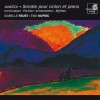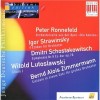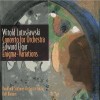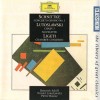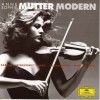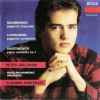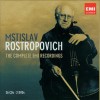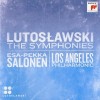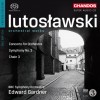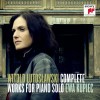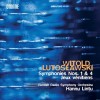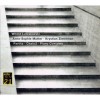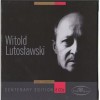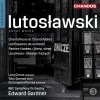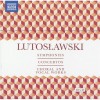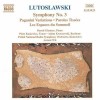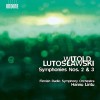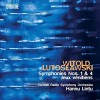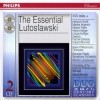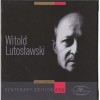Biography
Witold Lutosławski (January 25, 1913 – February 7, 1994) was one of the major European composers of the 20th century, and one of the preeminent Polish musicians during his last three decades. During his lifetime, Lutosławski earned many international awards and prizes, including the Order of the White Eagle, Poland's highest honour.
During his youth, Lutosławski studied piano and composition in Warsaw. His early works were influenced by Polish folk music. His style demonstrates a wide range of rich atmospheric textures. He began to develop his own characteristic composition techniques in the late 1950s. His music from this period onwards incorporates his own methods of building harmonies from small groups of musical intervals. It also uses aleatoric processes, in which the rhythmic coordination of parts is subject to an element of chance. His compositions (of which he was a notable conductor) include four symphonies, a Concerto for Orchestra, and several instrumental concertos and orchestral song cycles.
Lutosławski's parents were both born into the Polish landed nobility. His family owned estates in the area of Drozdowo. His father Józef was involved in the Polish National Democratic Party ("Endecja"), and the Lutosławski family became intimate with its founder, Roman Dmowski (Witold Lutosławski's middle name was Roman). Józef Lutosławski studied in Zürich, where in 1904 he met and married a fellow student, Maria Olszewska, who later became Lutosławski's mother. Józef pursued his studies in London, where he acted as correspondent for the National-Democratic newspaper, Goniec. He continued to be involved in National Democracy politics after returning to Warsaw in 1905, and took over the management of the family estates in 1908. After Józef's death, when Lutosławski was only five, other members of the family played an important part in his early life. They included Józef's half-brother Wincenty Lutosławski, a multilingual philosopher who used literary analysis to establish the chronology of Plato's writings; Wicenty was married to the Spanish poet Sophia Pérez Eguia y Casanova, and Józef's other brothers were also members of the intelligentsia.
Witold Roman Lutosławski, the youngest of three brothers, was born in Warsaw shortly before the outbreak of World War I. In 1915, with Russia at war with Germany, Prussian forces drove towards Warsaw. The Lutosławskis travelled east to Moscow, where Józef remained politically active, organising Polish Legions ready for any action that might liberate Poland (which was divided according to the 1815 Congress of Vienna—Warsaw was part of Tsarist Russia). Dmowski's strategy was for Russia to guarantee security for a new Polish state. However, in 1917, the February Revolution forced the Tsar to abdicate, and the October Revolution started a new Soviet government that made peace with Germany. Józef's activities were now in conflict with the Bolsheviks, who arrested him and his brother Marian. Thus, although fighting stopped on the Eastern Front in 1917, the Lutosławskis were prevented from returning home. The brothers were interred in Butyrskaya prison in central Moscow, where Lutosławski—by then aged five—visited his father. Józef and Marian were executed by a firing squad in September 1918, some days before their scheduled trial.
After the war, the family returned to the newly independent Poland, only to find their estates ruined. Lutosławski started piano lessons in Warsaw for two years from the age of six. After the Polish-Soviet War the family left Warsaw to return to Drozdowo, but after a few years of running the estates with limited success, his mother returned to Warsaw. In 1924 Lutosławski entered secondary school while continuing piano lessons. A performance of Karol Szymanowski's Third Symphony deeply affected him. In 1926 he started violin lessons, and in 1927 as a part-time student he entered the Warsaw Conservatory where Szymanowski was both professor and director. He started to compose, but could not manage both his school and conservatory studies, and so discontinued the latter. In 1931 he enrolled at Warsaw University to study mathematics, and in 1932 he formally joined the composition classes at the Conservatory. His only composition teacher was Witold Maliszewski, renowned Polish composer, a pupil of Nikolai Rimsky-Korsakov. and founder of Odessa conservatory (1913). He was given a strong grounding in musical structures, particularly movements in sonata form. In 1932 he gave up the violin, and in 1933 he discontinued his mathematics studies to concentrate on the piano and composition. He gained a diploma for piano performance from the Conservatory in 1936, after presenting a virtuoso program including Schumann's Toccata and Beethoven's fourth piano concerto. His diploma for composition was awarded by the same institution in 1937.
Military service followed—Lutosławski was trained in signalling and radio operating. He completed his Symphonic Variations in 1939, and the composer was encouraged by the conductor Grzegorz Fitelberg, who conducted their first performance. Lutosławski's plans to travel to Paris for further musical study were dashed in September 1939, when Germany invaded western Poland and Russia invaded eastern Poland. Lutosławski was mobilised with the radio unit at Kraków, and he was soon captured by German soldiers, but he escaped while being marched to prison camp, and walked 400 km back to Warsaw. Lutosławski's brother was captured by Russian soldiers, and later died in a Siberian labour camp.
To earn a living, Lutosławski joined a cabaret group playing popular dances. He also formed a piano duo with friend and fellow composer Andrzej Panufnik, and they performed together in Warsaw cafés. Their repertoire consisted of a wide range of music in their own arrangements, including the first incarnation of Lutosławski's Paganini Variations, a highly original transcription of the 24th Caprice for solo violin by Niccolò Paganini. Defiantly, they even sometimes played Polish music (the Nazis banned Polish music in Poland—including Chopin), and composed Resistance songs. Listening in cafés was the only way in which the Poles of German-occupied Warsaw could hear live music; putting on concerts was impossible since the occupying forces prohibited all organised gatherings. In café Aria, where they played, Lutosławski met his future wife Maria Danuta Bogusławska, a sister of the writer Stanisław Dygat.
Lutosławski left Warsaw with his mother a few days before the Warsaw Uprising of 1944, salvaging only a few scores and sketches—the rest of his music was lost during the destruction of the city, as were the family's Drozdowo estates. Of the 200 or so arrangements that Lutosławski and Panufnik had worked on for their piano duo, only Lutosławski's Paganini Variations survived. Lutosławski returned to the ruins of Warsaw after the Polish-Soviet treaty in April.
During the postwar years, Lutosławski worked on his first symphony—sketches of which he had salvaged from Warsaw—which he had started in 1941 and which was first performed in 1948, conducted by Fitelberg. To provide for his family, he also composed music that he termed functional, such as the Warsaw Suite (written to accompany a silent film depicting the city's reconstruction), sets of Polish Carols, and the study pieces for piano, Melodie Ludowe ("Folk Melodies").
In 1945, Lutosławski was elected as secretary and treasurer of the newly constituted Union of Polish Composers (ZKP—Związek Kompozytorów Polskich). In 1946, he married Danuta Bogusławska. The marriage was a lasting one, and Danuta's drafting skills were of great value to the composer: she became his copyist, and she solved some of the notational challenges of his later works.
In 1947, the Stalinist political climate led to the adoption and imposition by the ruling Polish United Workers' Party of the tenets of Socialist realism, and the authorities' condemnation of modern music which was deemed to be non-conformist. This artistic censorship, which ultimately came from Stalin personally, was to some degree prevalent over the whole Eastern bloc, and was reinforced by the 1948 Zhdanov decree. By 1948, the ZKP was taken over by musicians willing to follow the party line on musical matters, and Lutosławski resigned from the committee. He was implacably opposed to the ideas of Socialist realism. His First Symphony was proscribed as "formalist", and he found himself shunned by the Soviet authorities, a situation that continued throughout the era of Khrushchev, Brezhnev, Andropov and Chernenko. In 1954, the climate of musical oppression drove his friend Andrzej Panufnik to defect to the United Kingdom. Against this background, he was happy to compose pieces for which there was social need, but in 1954 this earned Lutosławski—much to the composer's chagrin—the Prime Minister's Prize, for a set of children's songs. As he commented, "[...] it was for those functional compositions of mine that the authorities decorated me [...] I realised that I was not writing indifferent little pieces, only to make a living, but was carrying on an artistic creative activity in the eyes of the outside world."[3]
It was his substantial and original Concerto for Orchestra of 1954 that established Lutosławski as an important composer of art music. The work, commissioned in 1950 by the conductor Witold Rowicki for the newly reconstituted Warsaw Philharmonic Orchestra, earned the composer two state prizes in the following year.
Stalin's death in 1953 allowed a certain relaxation of the cultural totalitarianism in Russia and its satellite states. By 1956, political events had led to a partial thawing of the musical climate, and the Warsaw Autumn Festival of Contemporary Music was founded. Originally intended to be a biennial festival, it has been held annually ever since 1958 (except under Martial law in 1982 when, in protest, the ZKP refused to organise it). The year 1958 saw the first performance of his Muzyka żałobna (Musique funèbre, or "Music of mourning"), which was written to commemorate the 10th anniversary of the death of Béla Bartók, but which took the composer four years to complete; this work brought international recognition, the annual ZKP prize and the UNESCO prize in 1959. This work, together with the Five songs of 1956–57, saw the significant development of Lutosławski's harmonic and contrapuntal thinking as he introduced his twelve-note system, the fruits of many years of thought and experiment. He established another feature of his compositional technique although already in use for some years by Alan Hovhaness, which became a Lutosławski signature, when he began introducing randomness into the exact synchronisation of various parts of the musical ensemble in Jeux vénitiens ("Venetian games"). These harmonic and temporal techniques became part of every subsequent work, and integral to his style.
In a departure from his usually serious compositions, the years 1957–63 saw Lutosławski also composing light music under the pseudonym Derwid. Mostly waltzes, tangos, foxtrots and slow-foxtrots for voice and piano, these pieces are in the genre of Polish actors' songs. Their place in Lutosławski's output may be seen as less incongruous given his own performances of cabaret music during the war, and in the light of his relationship by marriage to the famous Polish cabaret singer Kalina Jędrusik (who was his wife's sister-in-law).
In 1963, Lutosławski fulfilled a commission for the Music Biennale Zagreb, his Trois poèmes d'Henri Michaux for chorus and orchestra. It was the first work he had written for a commission from abroad, and brought him further international acclaim. It earned him a second State Prize for music (Lutosławski was not cynical about the award this time), and Lutosławski gained an agreement for the international publication of his music with Chester Music, then part of the Hansen publishing house. His String Quartet was first performed in Stockholm in 1965, followed the same year by the first performance of his orchestral song-cycle Paroles tissées. This shortened title was suggested by the poet Jean-François Chabrun, who had originally published the poems as Quatre tapisseries pour la Châtelaine de Vergi. The song cycle is dedicated to the tenor Peter Pears, who first performed it at the 1965 Aldeburgh Festival with the composer conducting. The Aldeburgh Festival was founded and organised by Benjamin Britten, with whom the composer formed a lasting friendship.
Shortly after this, Lutosławski started work on his Second Symphony, which had two premieres: Pierre Boulez conducted the second movement, Direct, in 1966, and when the first movement, Hésitant, was finished in 1967, the composer conducted a complete performance in Katowice. The Second Symphony is very different from a conventional classical symphony in structure, but Lutosławski used all of his technical innovations up to that point to build a large-scale, dramatic work worthy of the name. In 1968, the work earned Lutosławski first prize from UNESCO's International Rostrum of Composers, his third such award, which confirmed his growing international reputation. In 1967 Lutosławski was awarded the Sonning Award, Denmark's highest musical honour.
The Second Symphony, and Livre pour orchestre and the Cello Concerto which followed, were composed during a particularly traumatic period in Lutosławski’s life. His mother died in 1967, and the period 1967–70 saw a great deal of unrest in Poland. This sprang first from the suppression of the theatre production Dziady, which sparked a summer of protests; later, in 1968, the use of Polish troops to suppress the liberal reforms in Czechoslovakia's Prague Spring, and the Gdańsk Shipyards strike of 1970—which led to a violent clampdown by the authorities, both caused significant political and social tension in Poland. Lutosławski did not support the Soviet regime, and these events have been postulated as reasons for the increase in antagonistic effects in his work, particularly the Cello Concerto of 1968–70 for Rostropovich and the Royal Philharmonic Society. Indeed, Rostropovich's own opposition to the Soviet regime in Russia was just coming to a head (he shortly afterwards declared his support for the dissident Aleksandr Solzhenitsyn). Lutosławski himself did not hold the view that such influences had a direct effect on his music, although he acknowledged that they impinged on his creative world to some degree. In any case, the Cello Concerto was a great success, earning both Lutosławski and Rostropovich accolades. At the work's première, Arthur Bliss presented Rostropovich with the Royal Philharmonic Society's gold medal.
In 1973, Lutosławski attended a recital given by the baritone Dietrich Fischer-Dieskau with the pianist Sviatoslav Richter in Warsaw; he met the singer after the concert and this inspired him to write his extended orchestral song Les espaces du sommeil ("The spaces of sleep"). This work, Preludes and Fugue, Mi-Parti (a French expression that roughly translates as "divided into two equal but different parts"), Novelette, and a short piece for cello in honour of Paul Sacher's seventieth birthday, occupied Lutosławski throughout the 1970s, while in the background he was working away at a projected third symphony and a concertante piece for the oboist Heinz Holliger. These latter pieces were proving difficult to complete as Lutosławski struggled to introduce greater fluency into his sound world and to reconcile tensions between the harmonic and melodic aspects of his style, and between foreground and background. The Double Concerto for oboe, harp and chamber orchestra—commissioned by Paul Sacher—was finally finished in 1980, and the Third Symphony in 1983. In 1977 he received the Order of the Builders of People's Poland. In 1983 he received the Ernst von Siemens Music Prize.
During this period, Poland was undergoing yet more upheaval: in 1978, John Paul II was elected Pope, providing a national figurehead of world importance; in 1980, the influential movement Solidarność was created, led by Lech Wałęsa; and in 1981, martial law was declared by General Wojciech Jaruzelski. From 1981–89, Lutosławski refused all professional engagements in Poland as a gesture of solidarity with the artists' boycott. He refused to enter the Culture Ministry to meet any of the ministers, and was careful not be photographed in their company. In 1983, as a gesture of support, he sent a recording of the first performance (in Chicago) of the Third Symphony to Gdańsk to be played to strikers in a local church. In 1983, he was awarded the Solidarity prize, of which Lutosławski was reported to be more proud than any other of his honours.
Through the mid-1980s, Lutosławski composed three pieces called Łańcuch ("Chain"), which refers to the way the music is constructed from contrasting strands which overlap like the links of a chain. Chain 2 was written for Anne-Sophie Mutter (commissioned by Paul Sacher), and for Mutter he also orchestrated his slightly earlier Partita for violin and piano, providing a new linking Interlude, so that when played together the Partita, Interlude and Chain 2 form his longest work.
The Third Symphony earned Lutosławski the first Grawemeyer Prize from the University of Louisville, Kentucky, awarded in 1985. The significance of the prize lay not just in its prestige—other eminent nominations have included Elliott Carter and Michael Tippett—but in the size of its financial award (then US$150,000). The intention of the award is to remove recipients' financial concerns for a period to allow them to concentrate on serious composition. In a gesture of altruism, Lutosławski announced that he would use the fund to set up a scholarship to enable young Polish composers to study abroad; Lutosławski also directed that his fee from the San Francisco Symphony Orchestra for Chain 3 should go to this scholarship fund.
In 1987 Lutosławski was presented (by Michael Tippett) with the rarely-awarded Royal Philharmonic Society's Gold Medal during a concert in which Lutosławski conducted his Third Symphony; also that year a major celebration of his work was made at the Huddersfield Contemporary Music Festival. In addition, he was awarded honorary doctorates at several universities worldwide, including Cambridge.
Lutosławski was at this time writing his Piano Concerto for Krystian Zimerman, commissioned by the Salzburg Festival. His earliest plans to write a piano concerto dated from 1938; he was himself in his younger days a virtuoso pianist. It was a performance of this work and the Third Symphony at the Warsaw Autumn Festival in 1988 that marked the composer's return to the conductor's podium in Poland, after substantive talks had been arranged between the government and the opposition.
Lutosławski also, around 1990, worked on a fourth symphony and his orchestral song-cycle Chantefleurs et chantefables for soprano. The latter was first performed at a Prom concert in London in 1991, and the Fourth Symphony in 1993 with the composer conducting the Los Angeles Philharmonic. In between, and after initial reluctance, Lutosławski took on the presidency of the newly reconstituted "Polish Cultural Council". This had been set up after the reforms in 1989 in Poland brought about by the almost total support for Solidarity in the elections of that year, and the subsequent end of communist rule and the reinstatement of Poland as an independent republic rather than the communist state of the People's Republic of Poland.
In January 1993 Lutosławski came to Germany for a couple of concerts, amongst his own compositions he conducted "Chain 2" soloing the young violinist Koh Gabriel Kameda, the recording made from those concerts is the last recording of the composer before his death one year later. He continued his busy schedule, travelling to the United States, England, Finland, Canada and Japan, and sketching a violin concerto, but by the first week of 1994 it was clear that cancer had taken hold, and after an operation the composer weakened quickly and died on February 7. He had, a few weeks before, been awarded Poland's highest honour, the Order of the White Eagle (only the second person to receive this since the collapse of communism in Poland — the first had been Pope John Paul II). He was cremated; his devoted wife Danuta died shortly afterwards.
Lutosławski's works up until and including the Dance Preludes clearly show the influence of Polish folk music, both harmonically and melodically. Part of his art was in transforming folk music, rather than quoting it exactly. In some cases, folk music is unrecognisable as such without careful analysis, for example, in the Concerto for Orchestra. As Lutosławski developed the techniques of his mature compositions, he stopped using folk material explicitly, although its influence remained as subtle features until the end. As he said, "[in those days] I could not compose as I wished, so I composed as I was able", and about this change of direction he said, "I was simply not so interested in it [using folk music]". Also, Lutosławski was dissatisfied with composing in a "post-tonal" idiom: while composing the first symphony, he felt that this was for him a cul-de-sac.
In Five Songs (1956–57) and Muzyka żałobna (1958) Lutosławski introduced his own brand of twelve-tone music, marking his departure from the explicit use of folk music. His twelve-tone technique allowed him to build harmony and melody from specific intervals (in Muzyka żałobna, augmented fourths and semitones). This system also gave him the means to write dense chords without resorting to tone clusters, and enabled him to build towards these dense chords (which often include all twelve notes of the chromatic scale) at climactic moments. Lutosławski's twelve-note techniques were thus completely different in conception from Arnold Schoenberg's tone-row system, although Muzyka żałobna does happen to be based on a tone row. This twelve-note intervallic technique had its genesis in earlier works such as Symphony No. 1, and Paganini Variations.
Although Muzyka żałobna was internationally acclaimed, his new harmonic techniques led to something of a crisis for Lutosławski, during which he still could not see how to express his musical ideas. Then he happened to hear a radio broadcast of John Cage's Concert for Piano and Orchestra. Although he was not influenced by the sound or the philosophy of the music, Cage's explorations of indeterminacy set off a train of thought which resulted in Lutosławski finding a way to retain the harmonic structures he wanted while introducing the freedom for which he was searching His Three Postludes were hastily rounded off (he originally intended to write four) and he moved on to compose works in which he explored these new ideas.
In works from Jeux vénitiens, Lutosławski wrote long passages in which the parts of the ensemble are not to be synchronised exactly. At cues from the conductor each instrumentalist may be instructed to move straight on to the next section, to finish their current section before moving on, or to stop. In this way the random elements within compositionally controlled limits defined by the term aleatory are carefully directed by the composer, who controls the architecture and harmonic progression of the piece precisely. Lutosławski notated the music exactly, there is no improvisation, no choice of parts is given to any instrumentalist, and there is thus no doubt about how the musical performance is to be realised.
For his String Quartet (1964), Lutosławski originally produced only the four instrumental parts, refusing to bind them in a full score, because he was concerned that this would imply that he wanted notes in vertical alignment to coincide, as is the case with conventionally notated classical ensemble music. The LaSalle Quartet, however, specifically requested a score from which to prepare for the first performance. His wife Danuta solved this problem by cutting up the parts and sticking them together in boxes (which Lutosławski called mobiles), with instructions on how to signal in performance when all of the players should proceed to the next mobile. In his orchestral music, these problems of notation were not so difficult, because the instructions on how and when to proceed are given by the conductor.
Lutosławski's called this technique of his mature period "limited aleatorism". This controlled freedom given to the individual musicians is contrasted with passages where the orchestra is asked to synchronise their parts; the score for these passages is notated conventionally using bars (measures) and time signatures.
Both Lutosławski's harmonic and aleatory processes are illustrated by example 1, an excerpt from Hésitant, the first movement of the Symphony No. 2. At number 7, the conductor gives a cue to the flutes, celesta and percussionist, who then play their parts in their own time, without any attempt to synchronise with the other instrumentalists. The harmony of this section is based on a 12-note chord built from major seconds and perfect fourths. After all the instrumentalists have finished their parts, a two-second general pause is indicated. The conductor then gives a cue at number 8 (and indicates the tempo of the following section) for two oboes and the cor anglais. They each play their part, again with no attempt to synchronise with the other players. The harmony of this part is based on the hexachord F♯–G–A♭–C–D♭–D, arranged in such a way that the harmony of the section never includes any sixths or thirds. When the conductor gives another cue at number 9, the players each continue until they reach the repeat sign, and then stop: they are unlikely to end the section at the same time. This "refrain" (from numbers 8 to 9) recurs throughout the movement, slightly altered each time, but always played by double-reed instruments which do not play elsewhere in the movement: Lutosławski thus also carefully controls the orchestral palette.
The combination of Lutosławski's aleatory techniques and his harmonic discoveries allowed him to build up complex musical textures. In his later works Lutosławski evolved a more mobile, simpler, harmonic style, in which less of the music is played with an ad libitum coordination. This development first appeared in the brief Epitaph for oboe and piano, around the time Lutosławski was struggling to find the technical means to complete his Third Symphony. In chamber works for just two instrumentalists the scope for aleatory counterpoint and dense harmonies is significantly less than for orchestra, but these developments also influenced his orchestral style in late works including the Piano Concerto, Chantefleurs et Chantefables, Chain 2 and the Fourth Symphony, which require mostly conventional coordination.
Lutosławski's formidable technical developments grew out of his creative imperative; that he left a lasting body of major compositions is a testament to his resolution of purpose in the face of the anti-formalist authorities under which he formulated his methods.





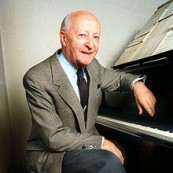

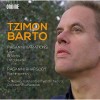
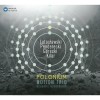
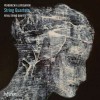
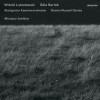
![Martha Argerich Edition - Solos & Duos [CD5of6]](http://static.classicalm.com/repository/disk-cover/small/3585-img1404480174476811.jpg)
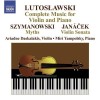
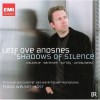
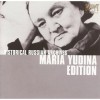
![Anthology of the Royal Concertgebouw Orchestra: Live the Radio Recordings 1960-1970 [CD14]](http://static.classicalm.com/repository/disk-cover/small/3451-img1395226962599147.jpg)
